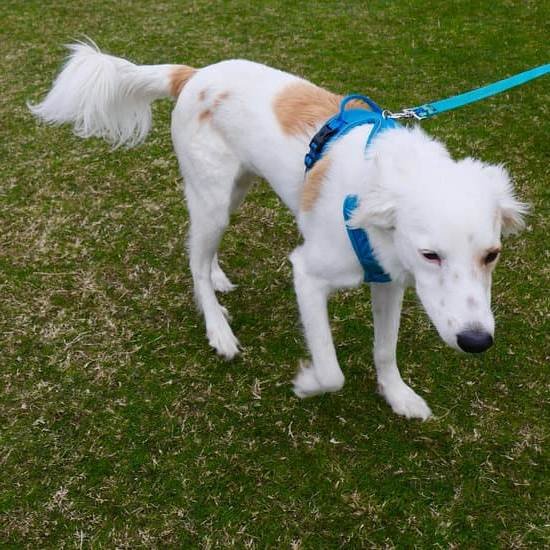Are you wondering how to train a good dog to use a bell? Bell training for dogs is an essential skill that can help improve communication with your pet and make daily routines easier. This article will guide you through the process of teaching your dog to use a bell, from understanding canine behavior to troubleshooting common challenges.
Understanding canine behavior and communication is crucial when it comes to training your dog to use a bell. Dogs rely heavily on body language and vocalizations to communicate, and bell training can provide them with an additional way to alert you to their needs. By recognizing the importance of this form of communication, you can effectively teach your dog how to use a bell as part of their daily routine.
Choosing the right bell for your dog is another important aspect of bell training. There are various types of bells available, including hanging bells and push-button bells, so it’s essential to select one that suits your dog’s size and abilities. Additionally, introducing the bell in a positive and encouraging manner will set the stage for successful training. This article will provide tips on selecting the right type of bell and effectively introducing it to your furry friend.
Understanding Canine Behavior and Communication
Canine Communication
Dogs communicate with each other and with their human companions in a variety of ways, including body language, vocalizations, and behavior. When it comes to training a dog to use a bell, understanding canine communication is essential. It’s important to pay attention to your dog’s body language and vocal cues to understand their needs and desires.
Instinctual Behavior
Dogs have natural instincts that shape their behavior. Understanding these instincts can help in training your dog to use a bell effectively. For example, dogs have a natural urge to go outside for bathroom breaks and may also exhibit behaviors such as scratching or pawing at the door when they need to go out. Recognizing these instinctual behaviors can be useful when introducing the bell as a communication tool for your dog.
Bonding and Trust
Building a strong bond with your dog is crucial for effective communication and training. When teaching your dog to use a bell, it’s important to establish trust and build a positive relationship. Dogs are more likely to respond positively to training methods when they trust and feel connected to their owners. Understanding canine behavior and communication can help strengthen the bond between you and your furry companion, making bell training more successful.
By understanding canine behavior and communication, pet owners can develop effective strategies for training their dogs to use a bell as a communication tool for various needs such as going outside or signaling meal times.
Choosing the Right Bell for Your Dog
When it comes to training your dog to use a bell, choosing the right bell is crucial. The bell should be durable, easy for your dog to nudge or ring, and easily accessible. There are different types of bells available in the market, including doorbells designed specifically for dogs, hanging bells, and handheld bells. It’s important to consider your dog’s size and strength when choosing the right bell.
Consider Your Dog’s Size and Strength
Smaller dogs may struggle with heavy or larger bells, so it’s important to choose a bell that is appropriate for their size. For bigger and stronger dogs, a sturdier bell may be needed so that it doesn’t break easily when they use it. It’s also essential to consider the noise level of the bell – louder bells may startle or scare some dogs.
Choose a Bell With a Clear Sound
The sound of the bell should be distinctive enough for your dog to hear throughout the house yet not overwhelming. Test out different bells and choose one with a clear ring that can easily grab your dog’s attention without being too loud. Once you have chosen the right bell for your dog, you can then move on to introducing the bell to them and start the training process on how to train a good dog to use a bell.
Introducing the Bell to Your Dog
When it comes to bell training for dogs, introducing the bell to your furry friend is a crucial step. It’s important to choose the right type of bell that will be suitable for your dog and their environment. Here are some tips on how to properly introduce the bell to your dog:
- Start by choosing a bell that is suitable for your dog’s size and temperament. For smaller dogs, a lightweight, smaller bell may be more appropriate, while larger dogs may benefit from a heavier, sturdier bell.
- Place the bell in an area where your dog spends most of their time, such as near the door they use to go outside or by their food and water bowls.
- Encourage your dog to investigate the bell by allowing them to sniff it and become familiar with its presence. You can do this by associating the bell with positive experiences, such as offering treats or praise when they show interest in it.
Once your dog has become comfortable with the presence of the bell, you can begin incorporating it into their training routine. By following these steps, you can set the stage for successful bell training for your beloved pet.
Additionally, it is essential to understand that each dog’s response to the introduction of a bell may vary. Some dogs may take quickly to it and show immediate interest, while others may require more time and patience before becoming accustomed to using a bell. The key is to be patient and consistent in introducing the bell to your dog, using positive reinforcement techniques throughout the process.
Positive Reinforcement Training Methods
When it comes to training a dog to use a bell, positive reinforcement methods are essential for success. Positive reinforcement involves rewarding your dog for exhibiting the desired behavior, in this case, using the bell to signal their need to go outside. This type of training not only encourages good behavior but also strengthens the bond between you and your furry friend.
Here are some effective positive reinforcement training methods that can help teach your dog how to use a bell:
1. Clicker Training: Use a clicker to mark the moment your dog rings the bell and then immediately give them a treat. The sound of the clicker will become associated with the reward, reinforcing the action of using the bell.
2. Treat Rewards: Whenever your dog rings the bell, provide them with their favorite treat as a reward. Over time, they will come to understand that using the bell results in a tasty incentive.
3. Verbal Praise: Dogs respond well to verbal praise, so be sure to shower them with enthusiastic words of encouragement when they successfully ring the bell.
By consistently implementing these positive reinforcement techniques, you can effectively train your dog to use a bell in no time. Remember that patience and consistency are key in any training process; every dog learns at their own pace, so be sure to celebrate small achievements along the way.
- Clicker Training
- Treat Rewards
- Verbal Praise
Creating a Daily Bell Routine
Once your dog has become familiar with the bell and consistently uses it to signal their need to go outside, it is important to establish a daily bell routine. Consistency is key in reinforcing this behavior, so setting specific times for bell use can help your dog continue to understand its purpose.
One way to create a daily bell routine is to take your dog outside at regular intervals, such as first thing in the morning, after meals, and before bedtime. Each time you approach the door with your dog, encourage them to ring the bell before going outside. This consistent routine helps reinforce the association between the bell and going outdoors.
Another important aspect of creating a daily bell routine is to be attentive and responsive to your dog’s signals. If your dog rings the bell but then does not eliminate once outside, bring them back in without allowing playtime or other activities. This helps reinforce that the purpose of ringing the bell is specifically for bathroom needs.
Consistency and patience are essential when creating a daily bell routine for your dog. By being attentive and maintaining a consistent schedule for outdoor breaks, you can help reinforce the use of the bell as an effective communication tool for your pet.
| Aspect | Description |
|---|---|
| Regular Intervals | Establish specific times for taking your dog outside and encourage them to ring the bell before going out |
| Responsive Signals | Be attentive and responsive to your dog’s signals when they ring the bell, ensuring that they understand its purpose |
| Consistency and Patience | Maintaining consistency in schedule and being patient in reinforcing the use of the bell as a communication tool for your pet |
Troubleshooting Common Challenges
Training your dog to use a bell may come with some challenges along the way. This section will discuss some common issues that may arise during the training process and provide solutions on how to address them.
One of the most common challenges is when the dog becomes hesitant or fearful of the bell, leading to reluctance in using it to signal their needs. This can be addressed by reintroducing the bell in a gradual and positive manner, associating it with rewards and praise.
Another challenge that dog owners may encounter is when their pets become overly dependent on the bell, resulting in excessive ringing for attention or for unnecessary reasons. To address this, it is important to differentiate between genuine signals and false alarms, only responding to the bell when it is used appropriately. Consistency and patience are key in addressing these issues as well as ensuring that positive reinforcement methods are continued throughout the training process.
Additionally, some dogs may display stubborn behavior or simply refuse to engage with the bell despite consistent training efforts. In such cases, revisiting the initial steps of introducing the bell and adjusting training methods may be necessary.
It is important for dog owners to understand that every dog is unique and may require different approaches in training. By being observant of their pet’s behavior and adjusting training techniques accordingly, they can effectively troubleshoot these common challenges for successful bell training.
| Challenges | Solutions |
|---|---|
| Hesitancy or fear of the bell | Reintroduce bell gradually with positive associations |
| Excessive dependence on the bell | Differentiate between genuine signals and false alarms, continue positive reinforcement |
| Stubborn behavior or refusal to engage with the bell | Revisit initial steps of introducing the bell, adjust training methods based on individual needs. |
Celebrating Success and Reinforcing Bell Training With Your Dog
In conclusion, training your dog to use a bell is not only beneficial for you as a pet owner, but it also provides mental stimulation and a sense of accomplishment for your furry friend. By understanding the importance of bell training for dogs and recognizing their natural behavior and communication cues, you can effectively introduce a bell to your dog and reinforce positive training methods.
Choosing the right bell for your dog is crucial, as well as using positive reinforcement to encourage them to use the bell consistently. Creating a daily routine around bell training will help solidify this behavior, but it’s important to troubleshoot any challenges that may arise along the way.
Ultimately, celebrating success in bell training with your dog is essential in reinforcing this behavior. By consistently celebrating their achievements and providing rewards, you can ensure that they continue to use the bell when they need to communicate with you. With patience, consistency, and a lot of love, you can successfully train a good dog to use a bell, enhancing communication between you and your furry companion.
Frequently Asked Questions
How Do I Get My Dog to Use the Bell?
Getting your dog to use the bell involves positive reinforcement and consistency. Start by teaching them to touch the bell with their nose or paw, then associate the bell with going outside. Be patient and praise them when they use it.
How Do You Train a Dog to Use a Doorbell?
To train a dog to use a doorbell, begin by associating a specific sound or action with going outside. This can be done by using a training tool or creating a makeshift doorbell. Consistency and positive reinforcement are key to successfully training your dog to use a doorbell.
Can an Older Dog Be Bell Trained?
Yes, older dogs can be bell trained, but it may take more time and patience compared to training a younger dog. It’s important to adjust the training methods based on the dog’s age, but consistent positive reinforcement can help older dogs learn to use the bell for signaling when they need to go outside.

Welcome to the blog! I am a professional dog trainer and have been working with dogs for many years. In this blog, I will be discussing various topics related to dog training, including tips, tricks, and advice. I hope you find this information helpful and informative. Thanks for reading!





